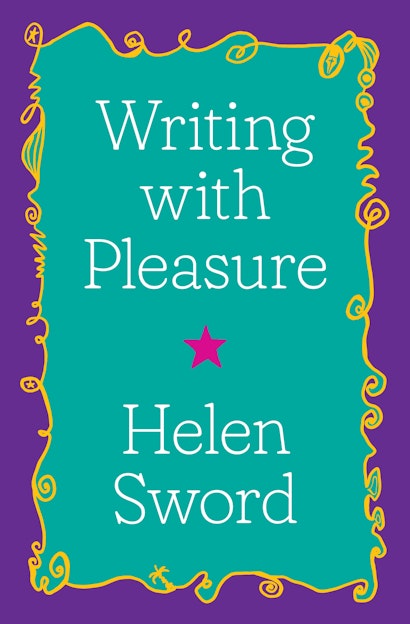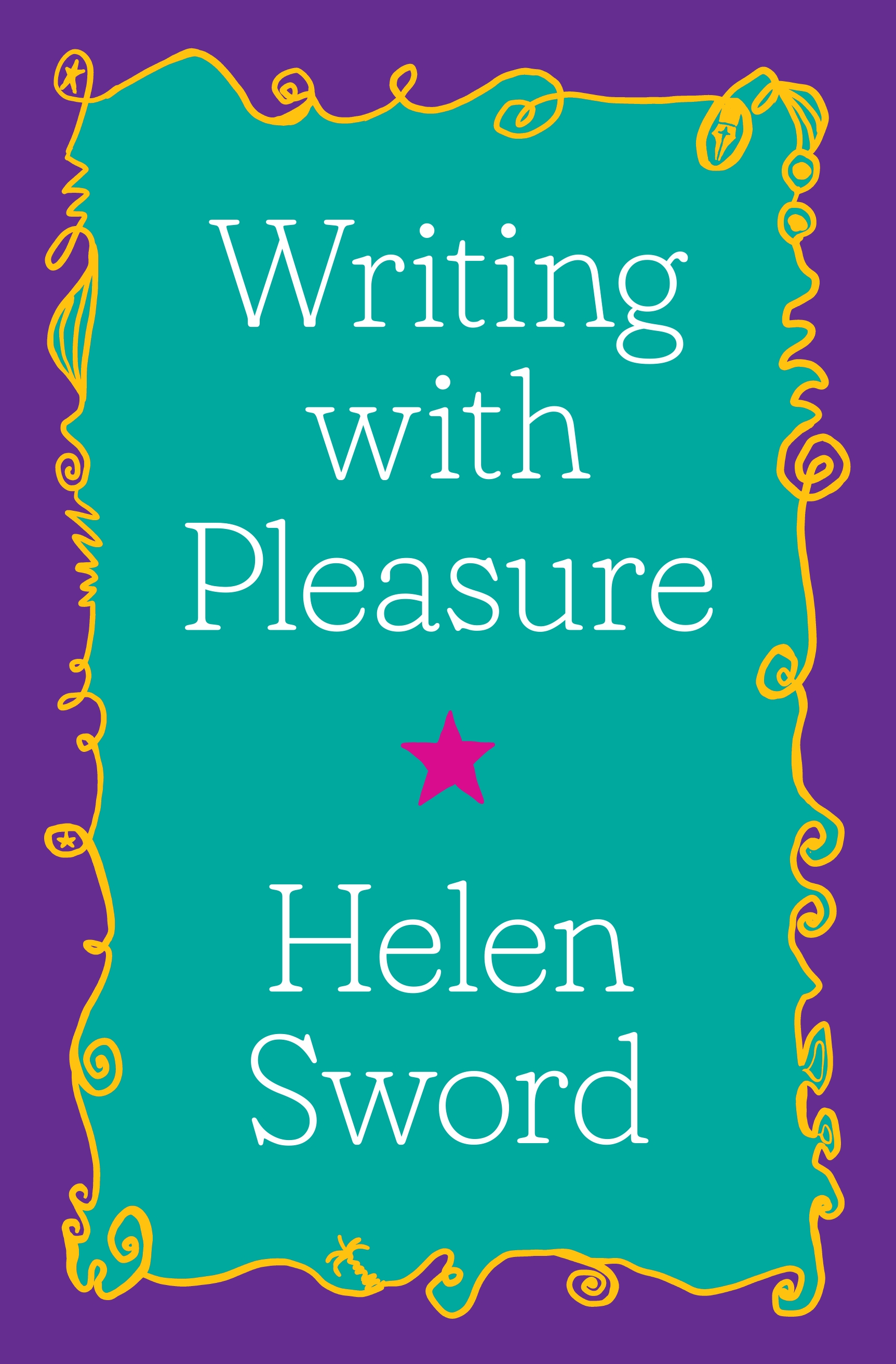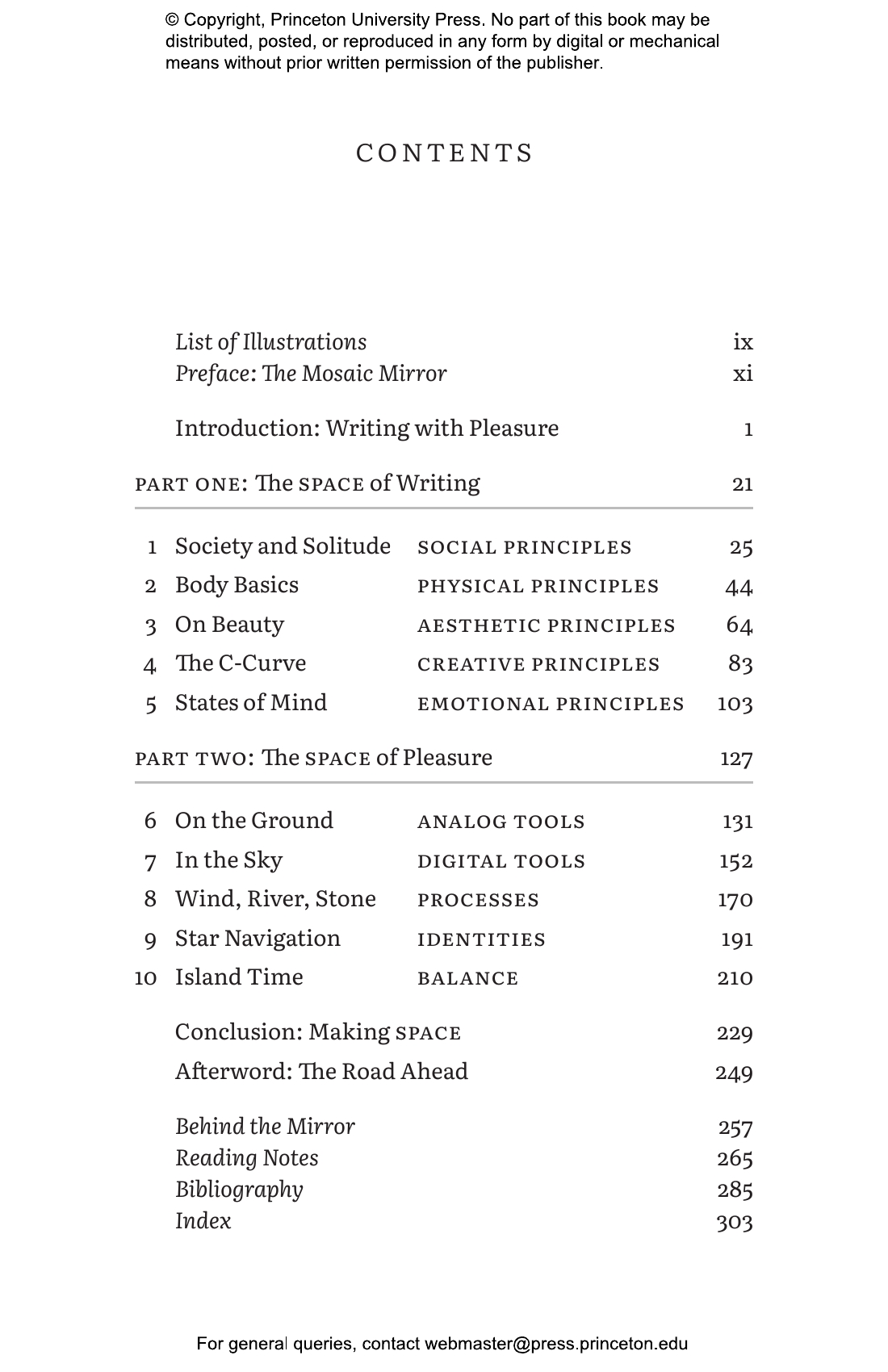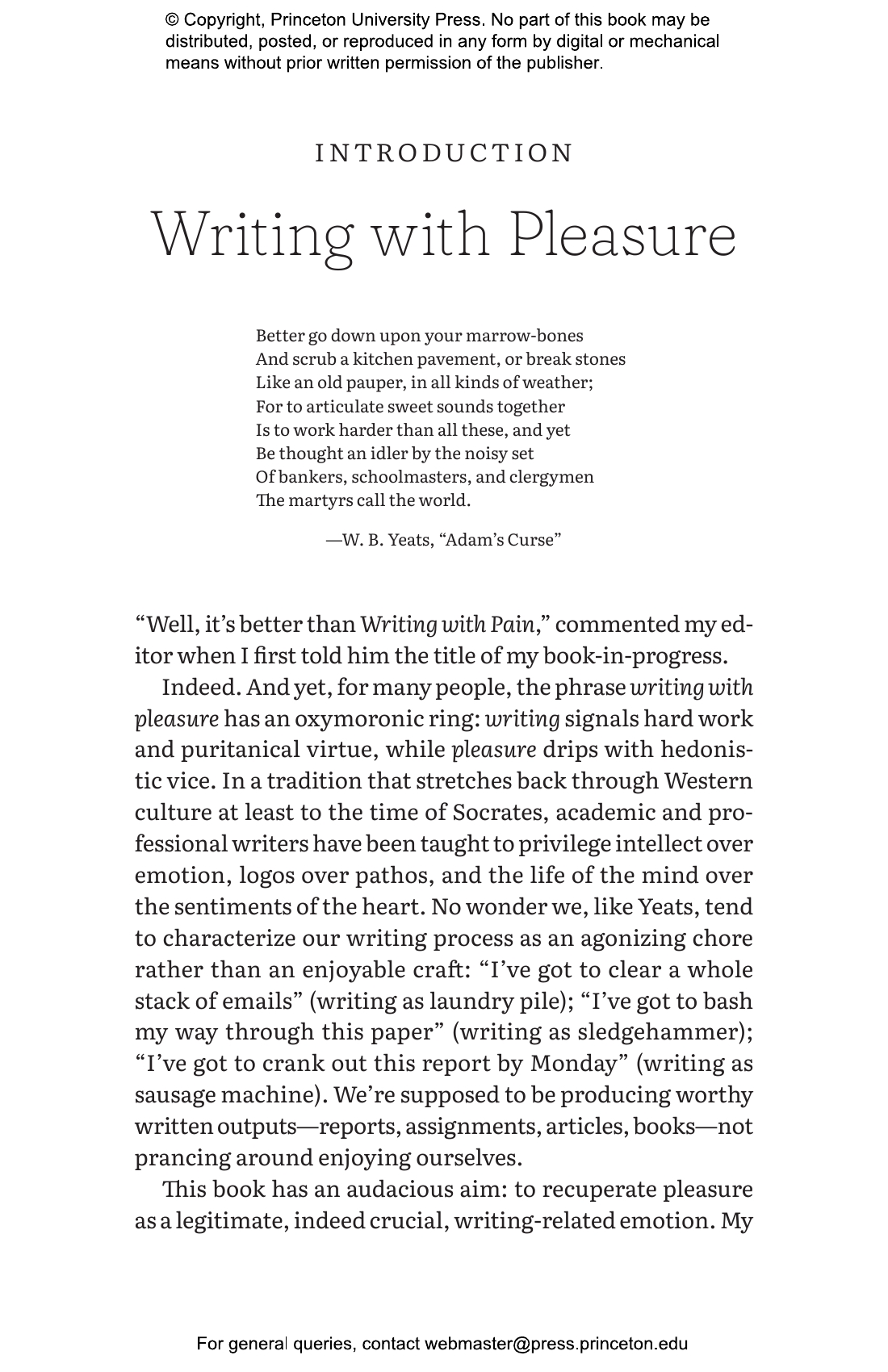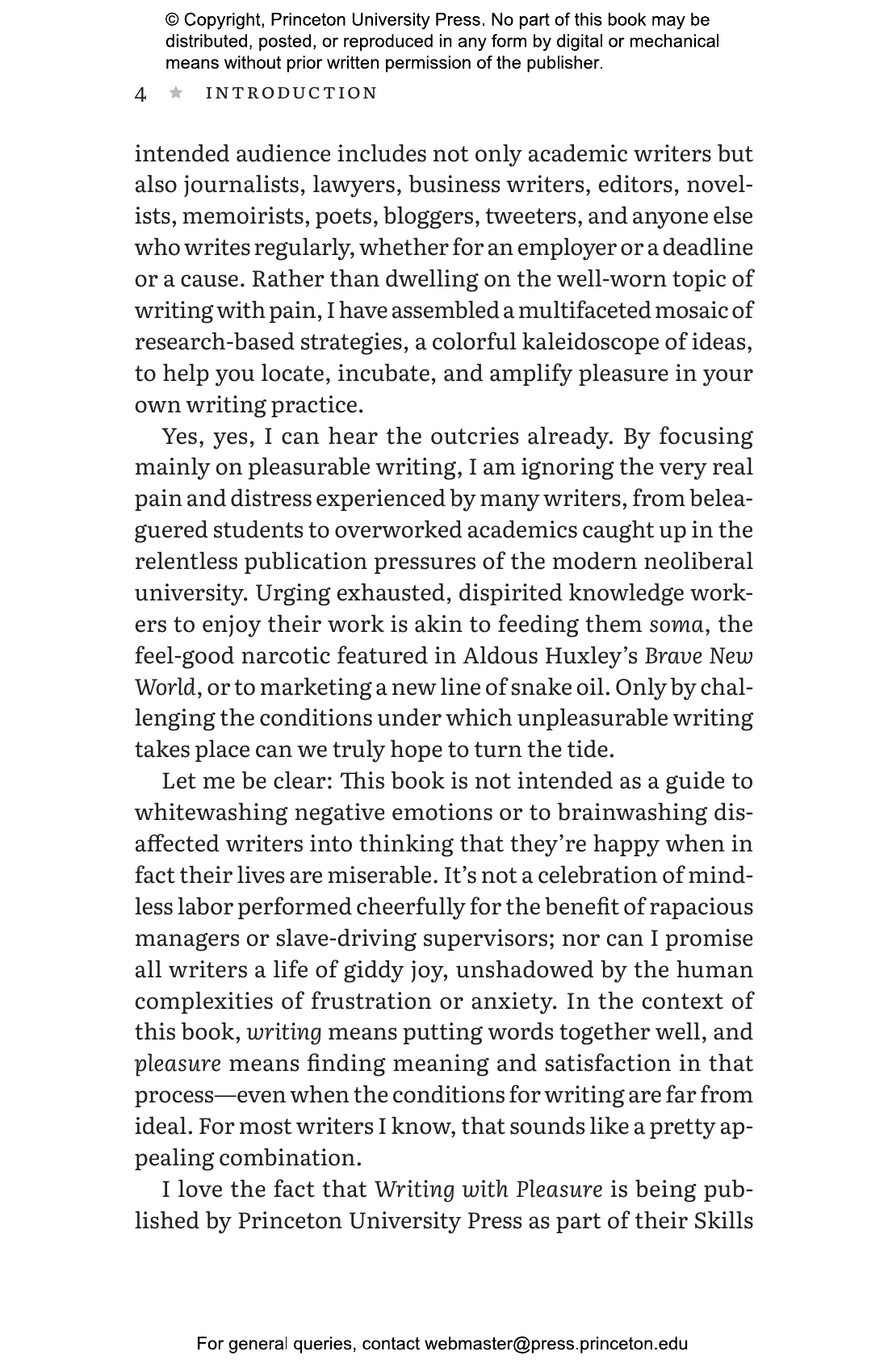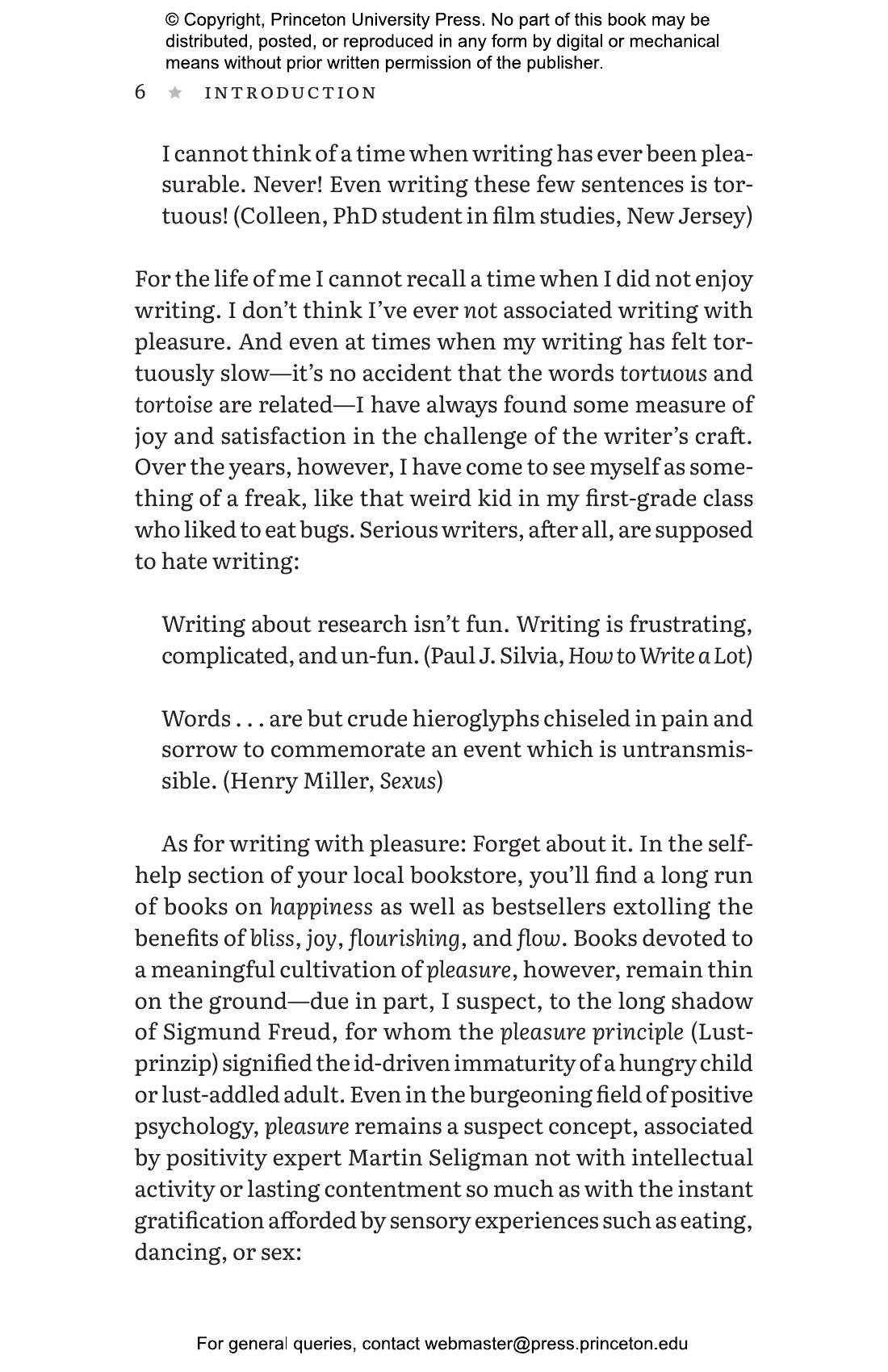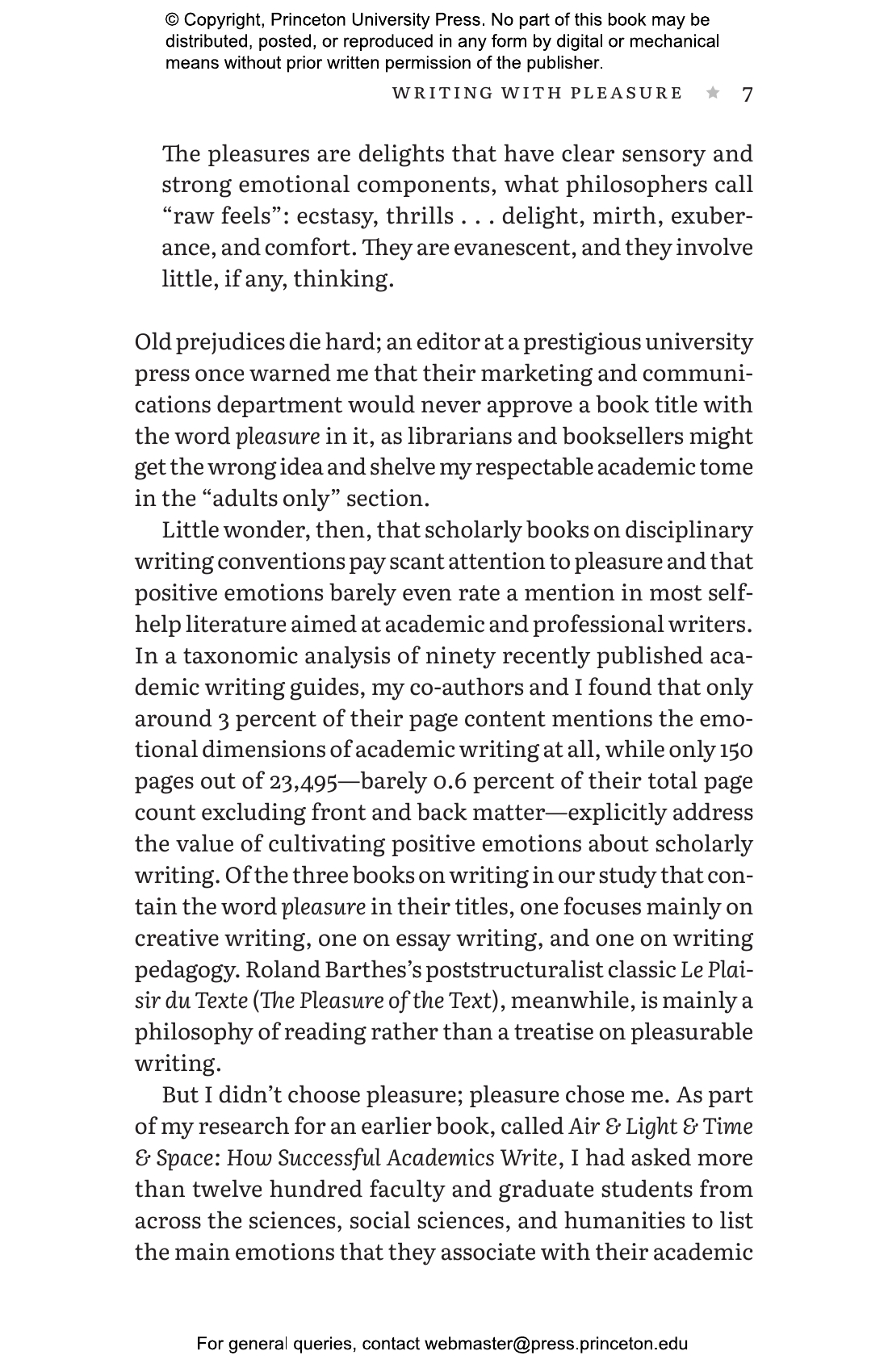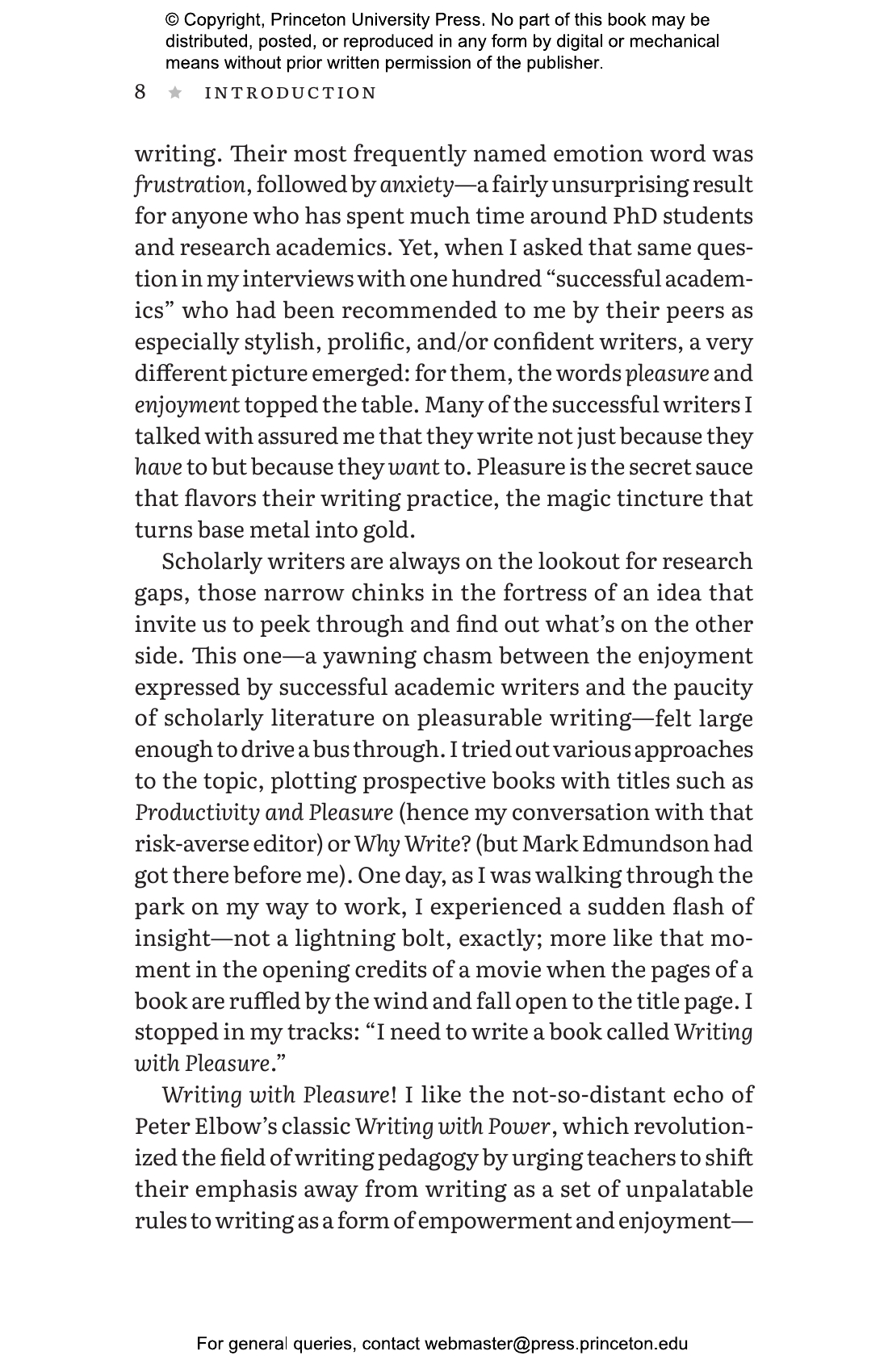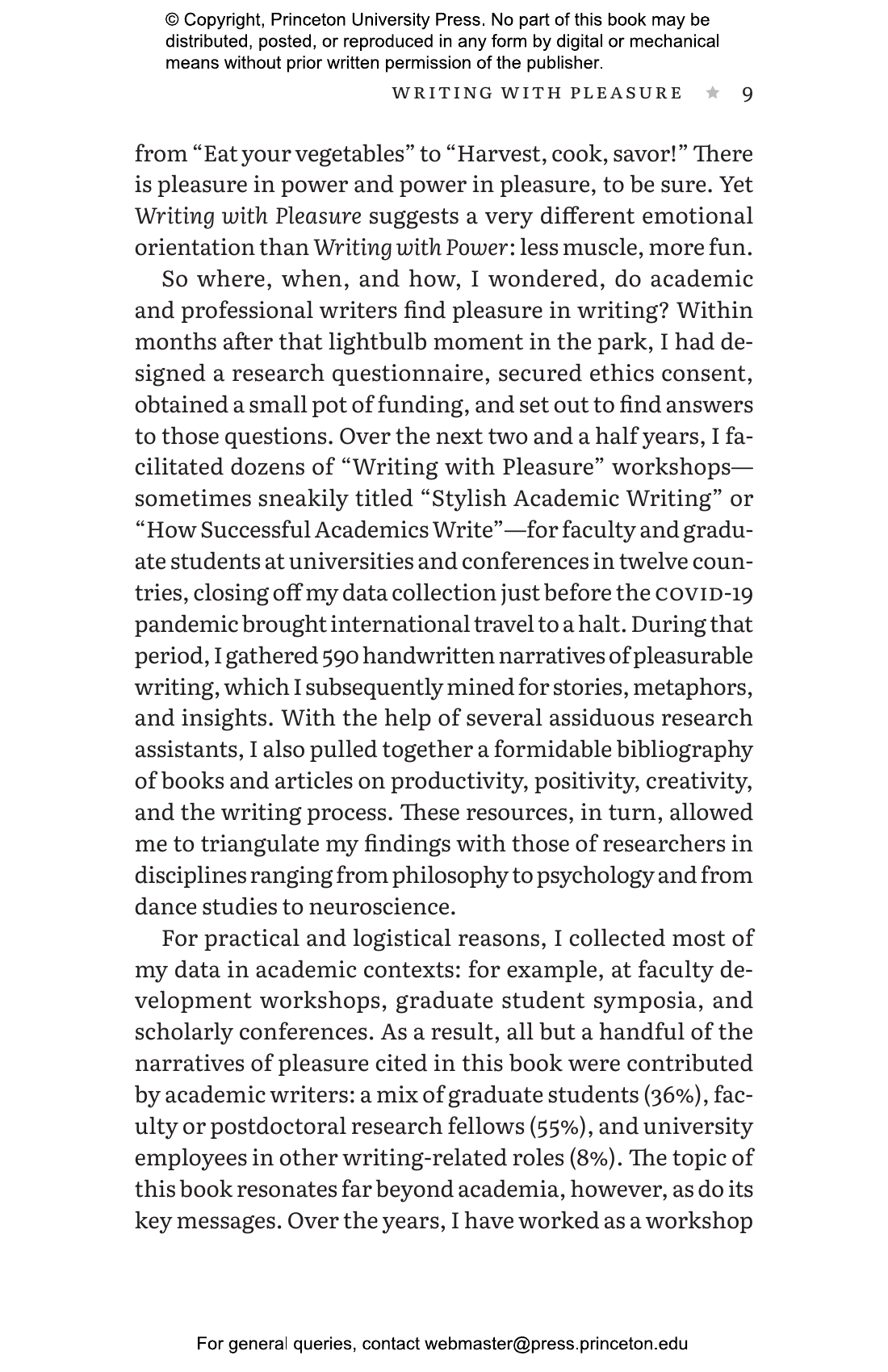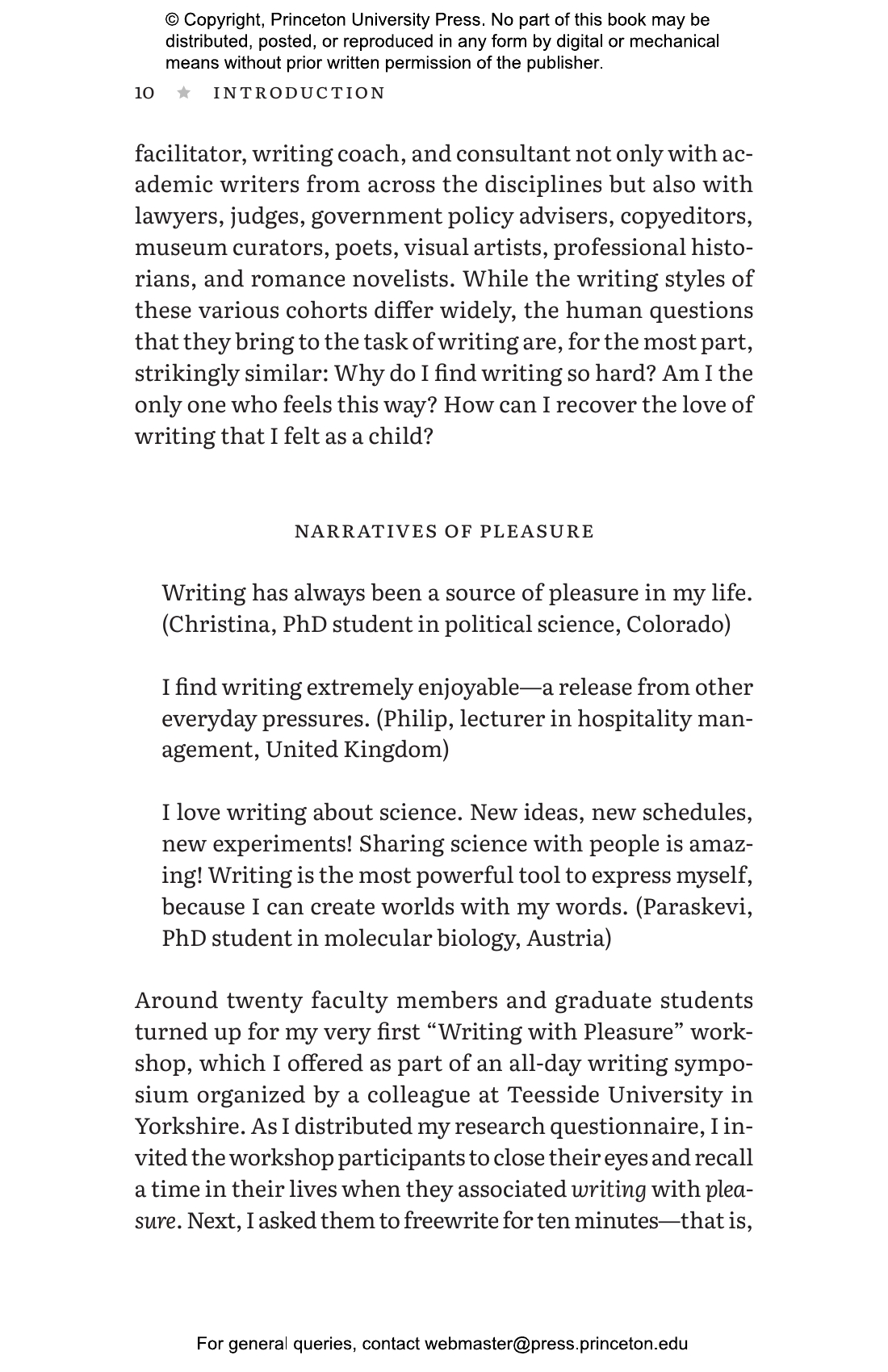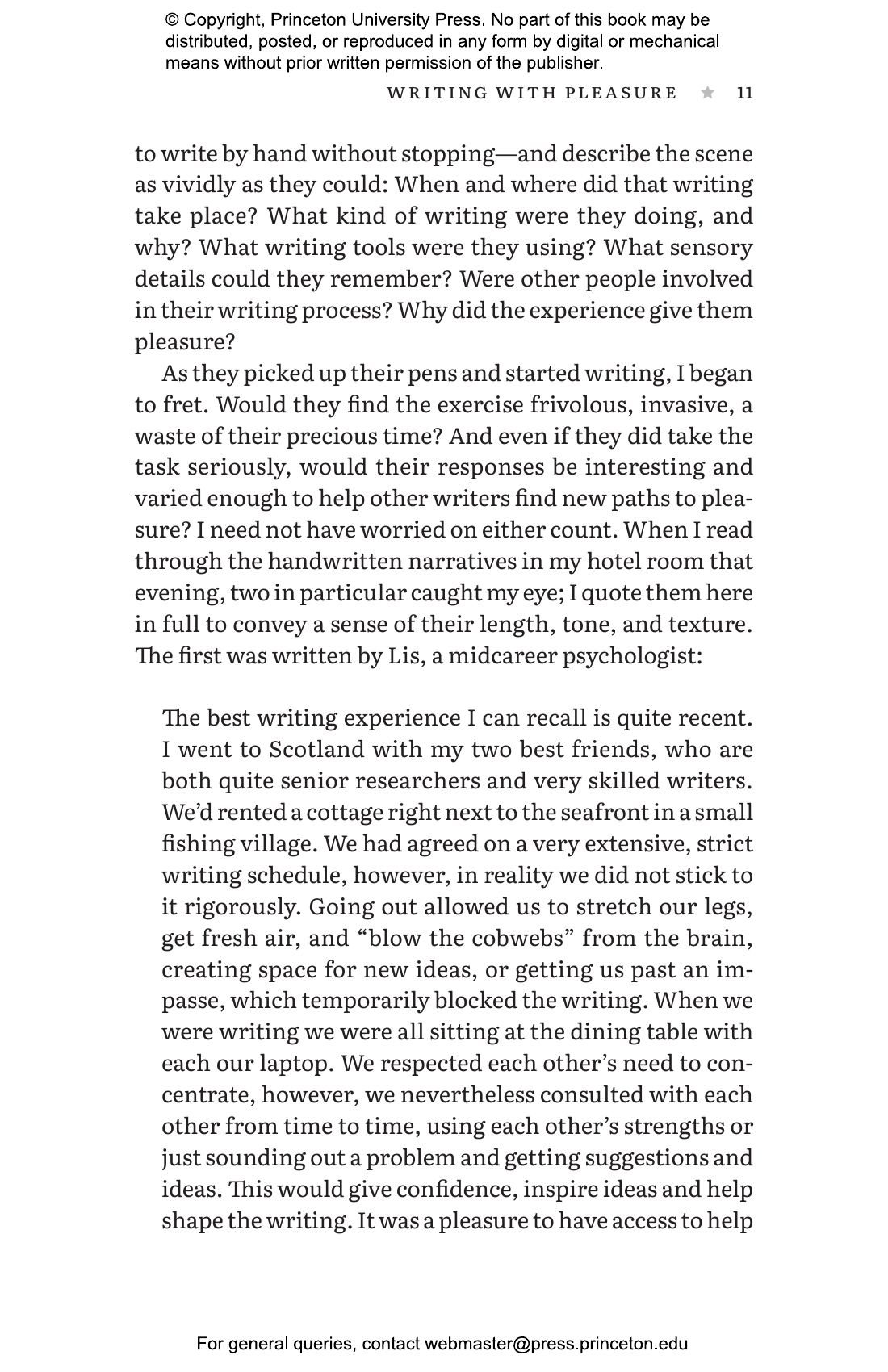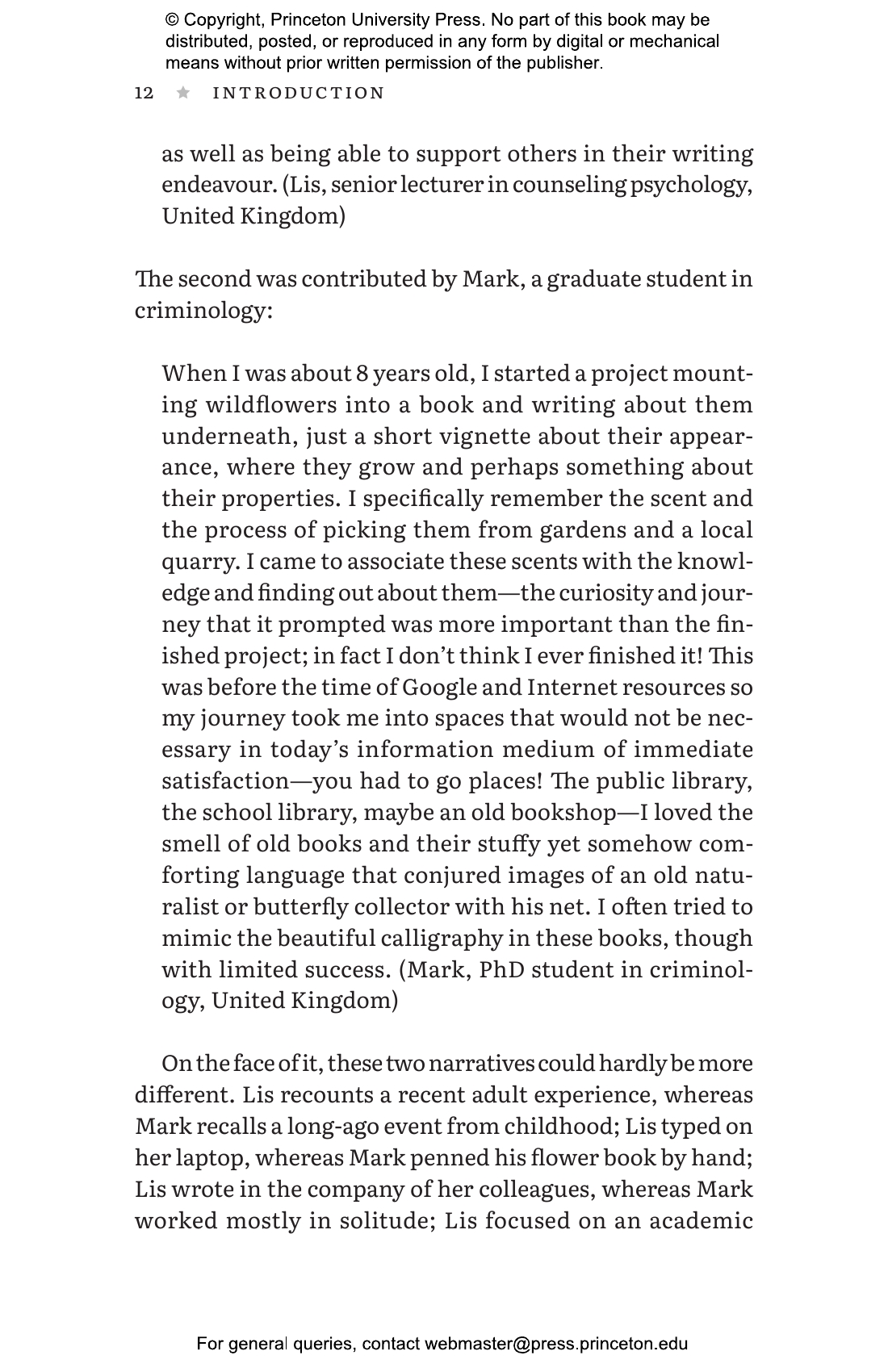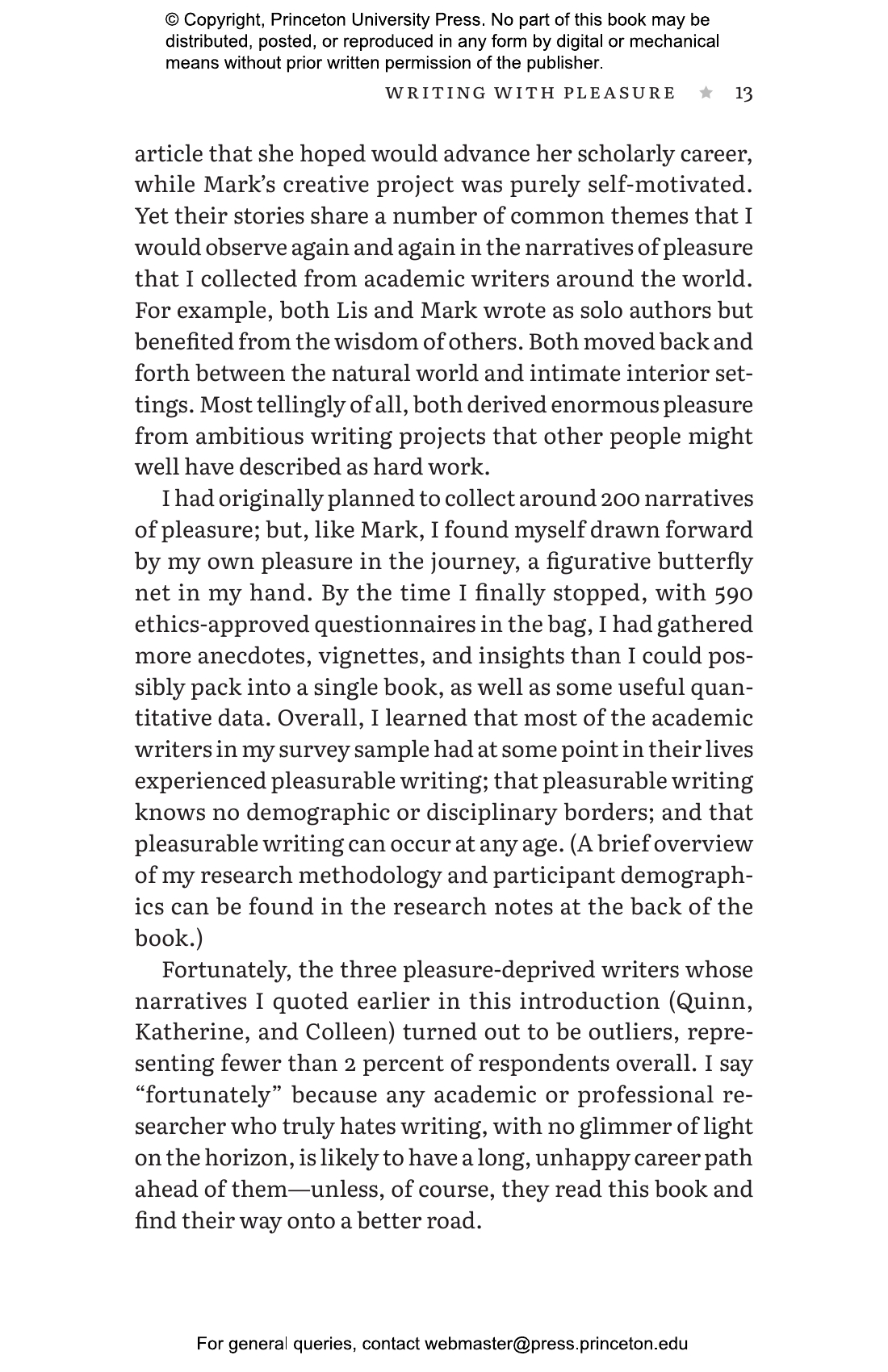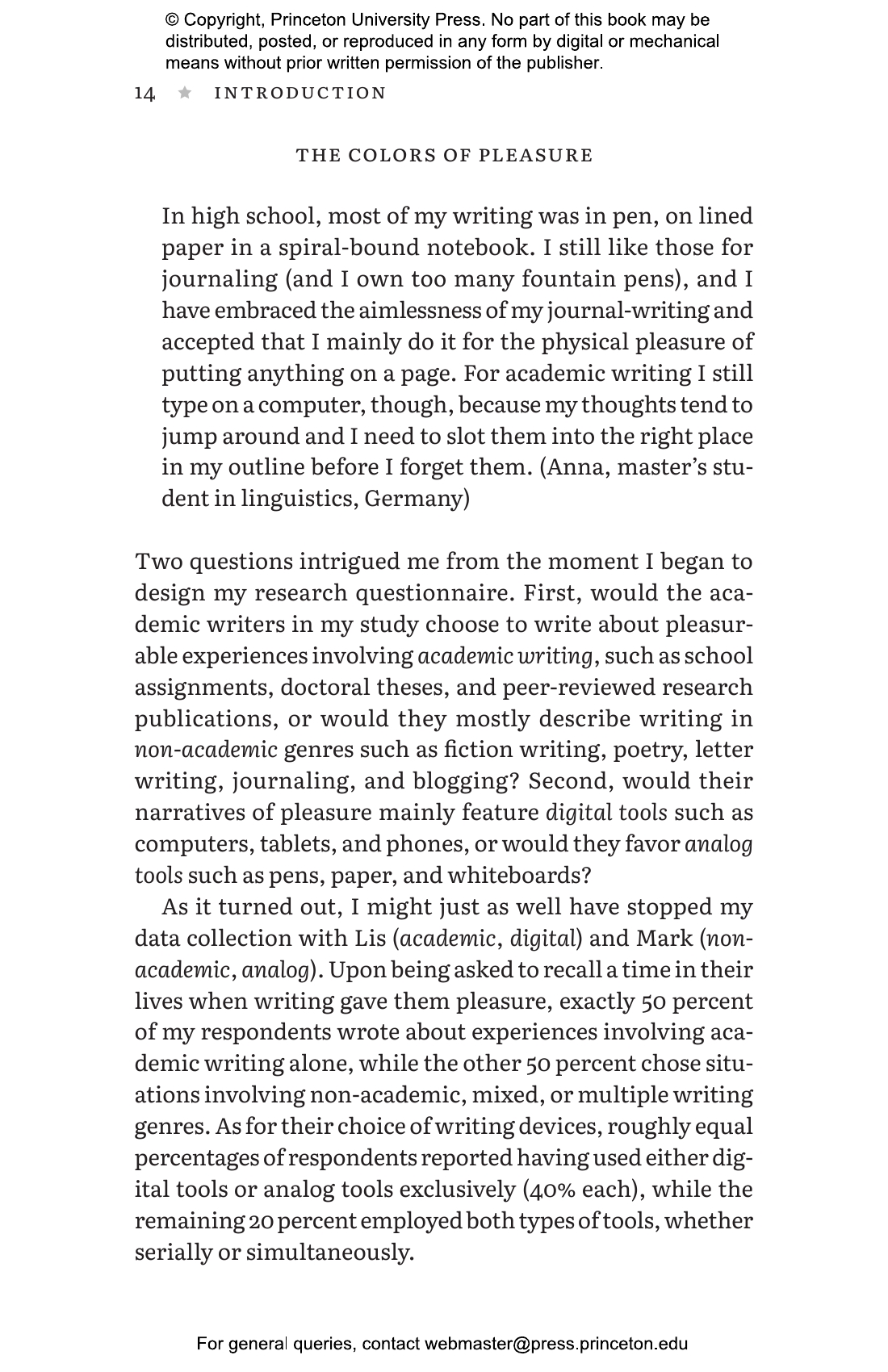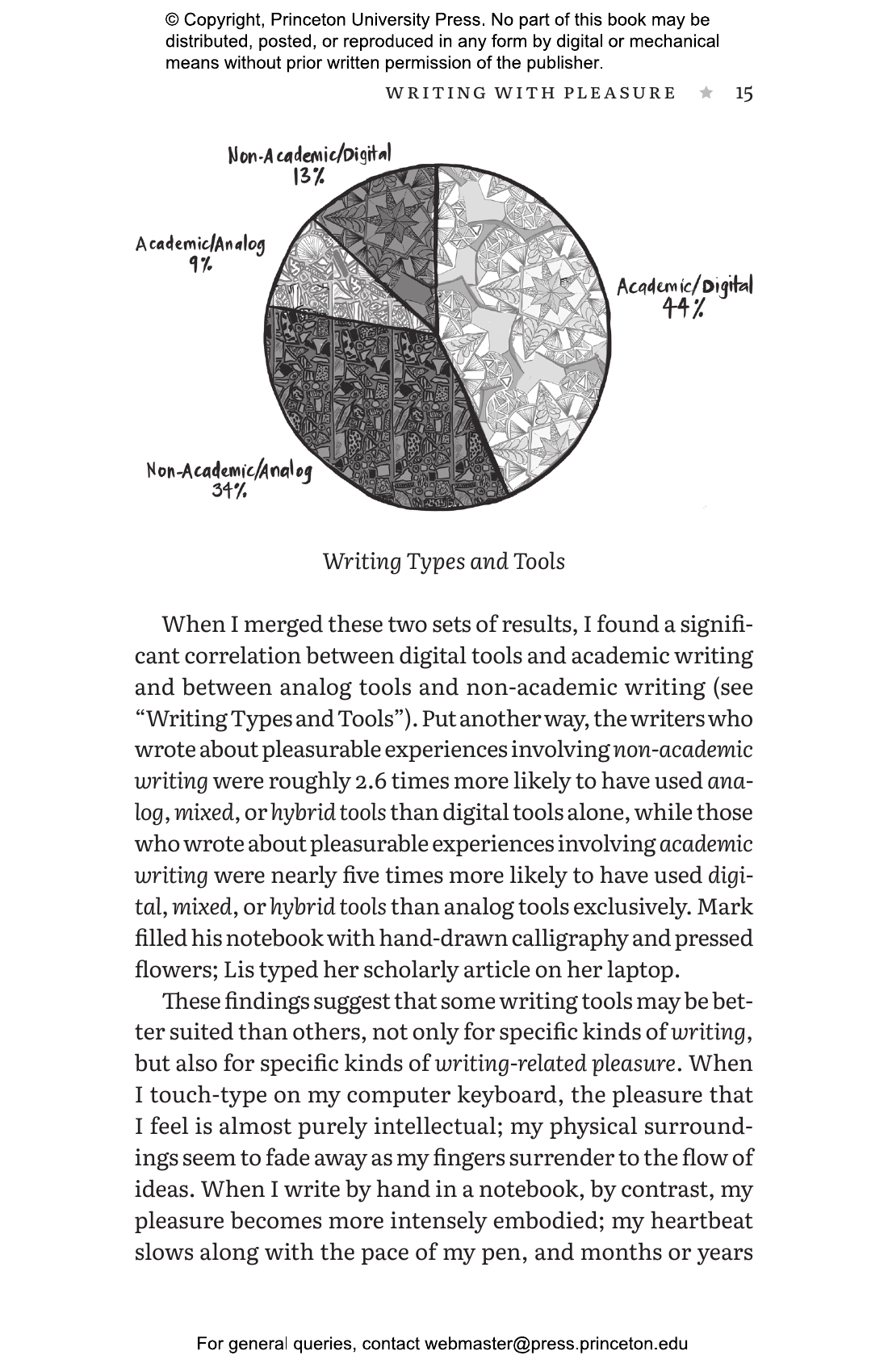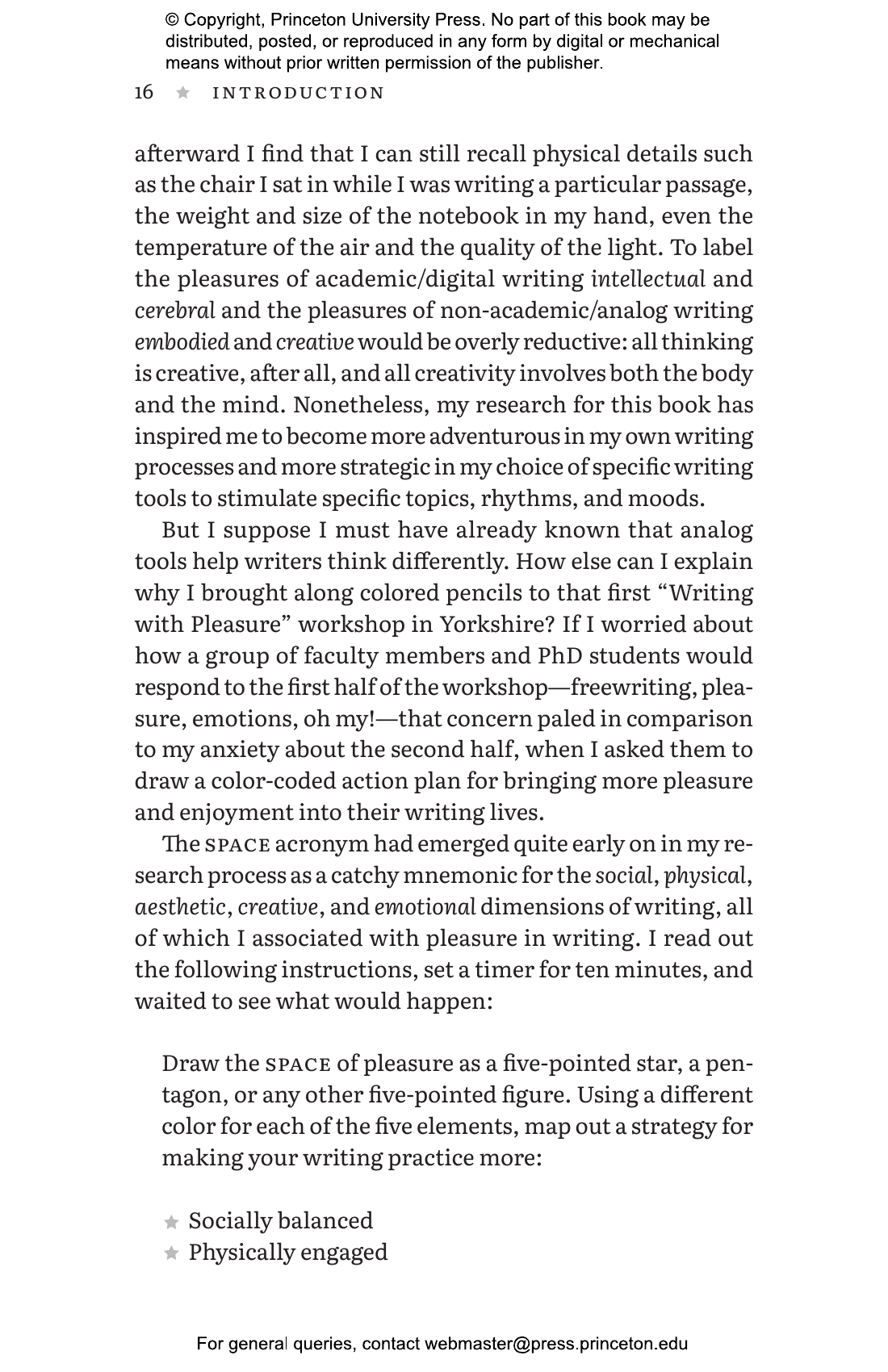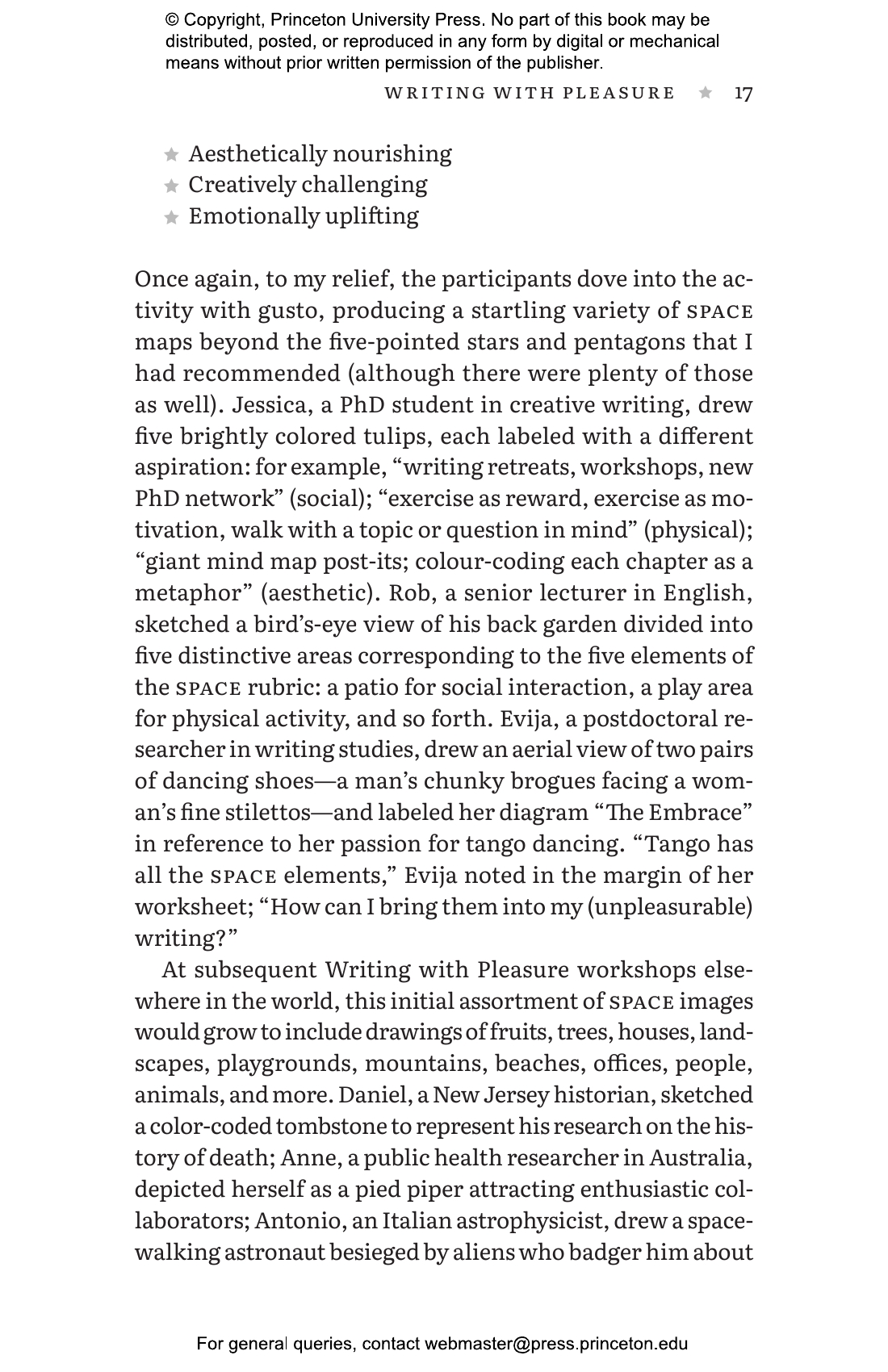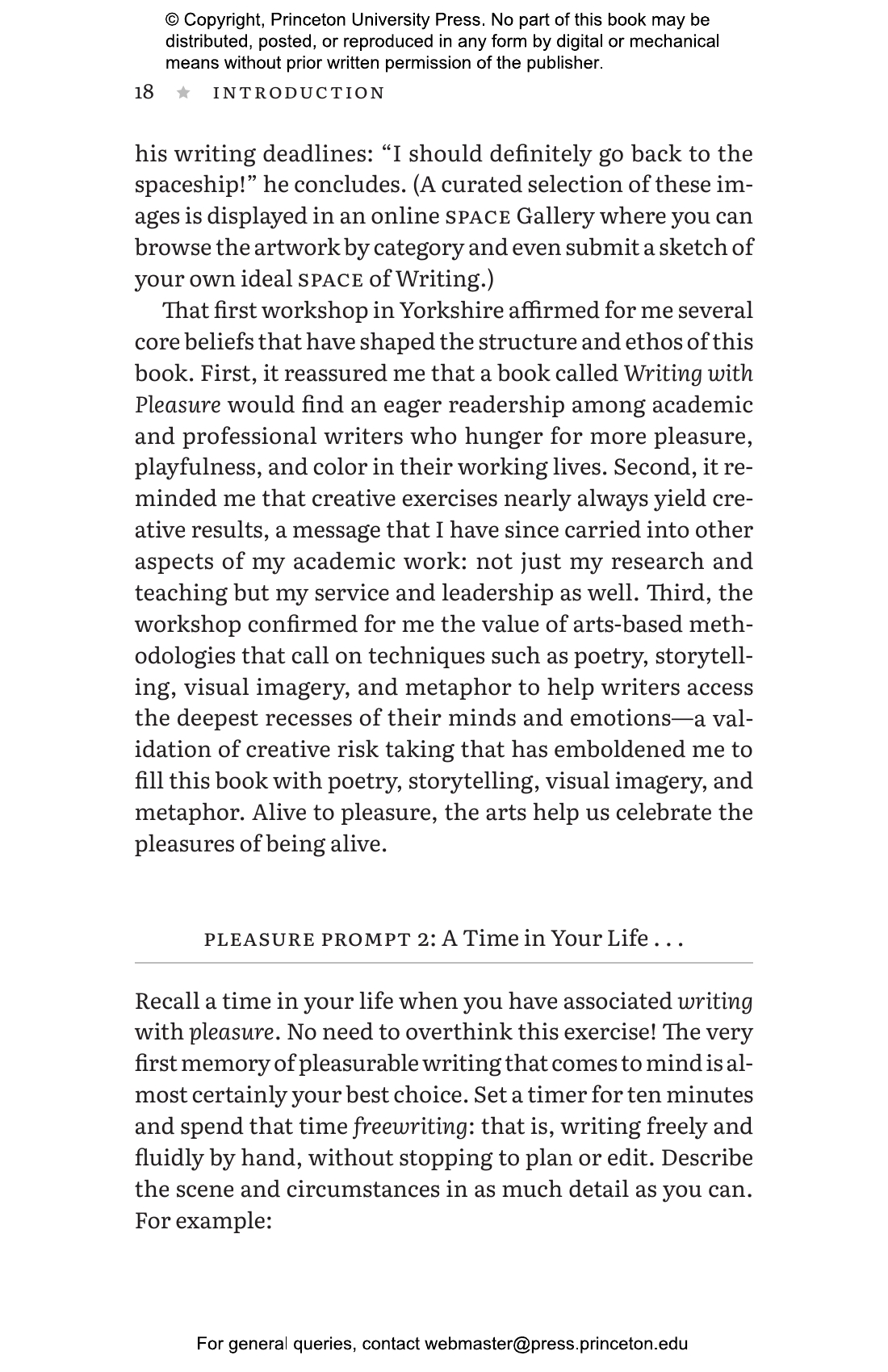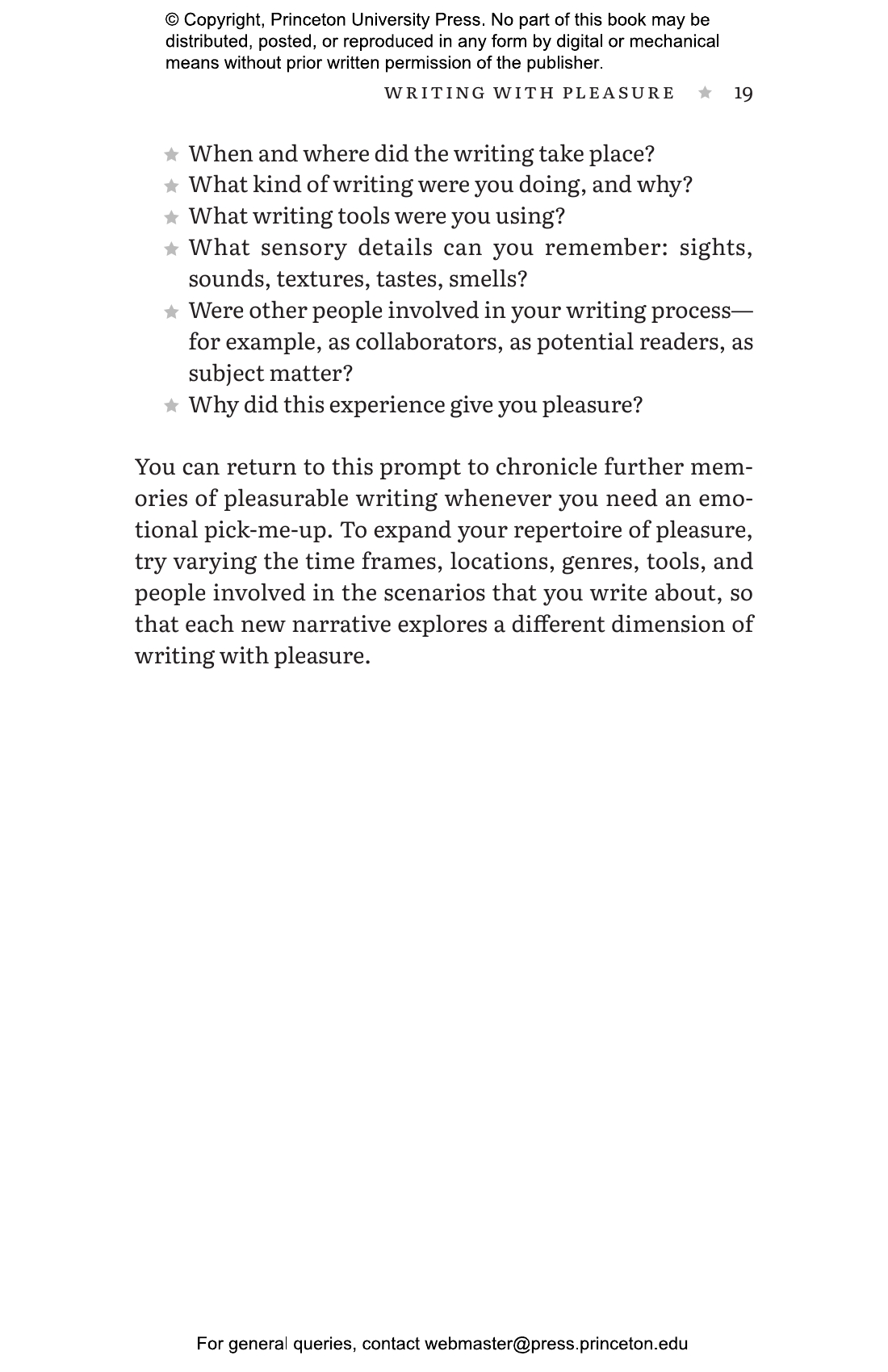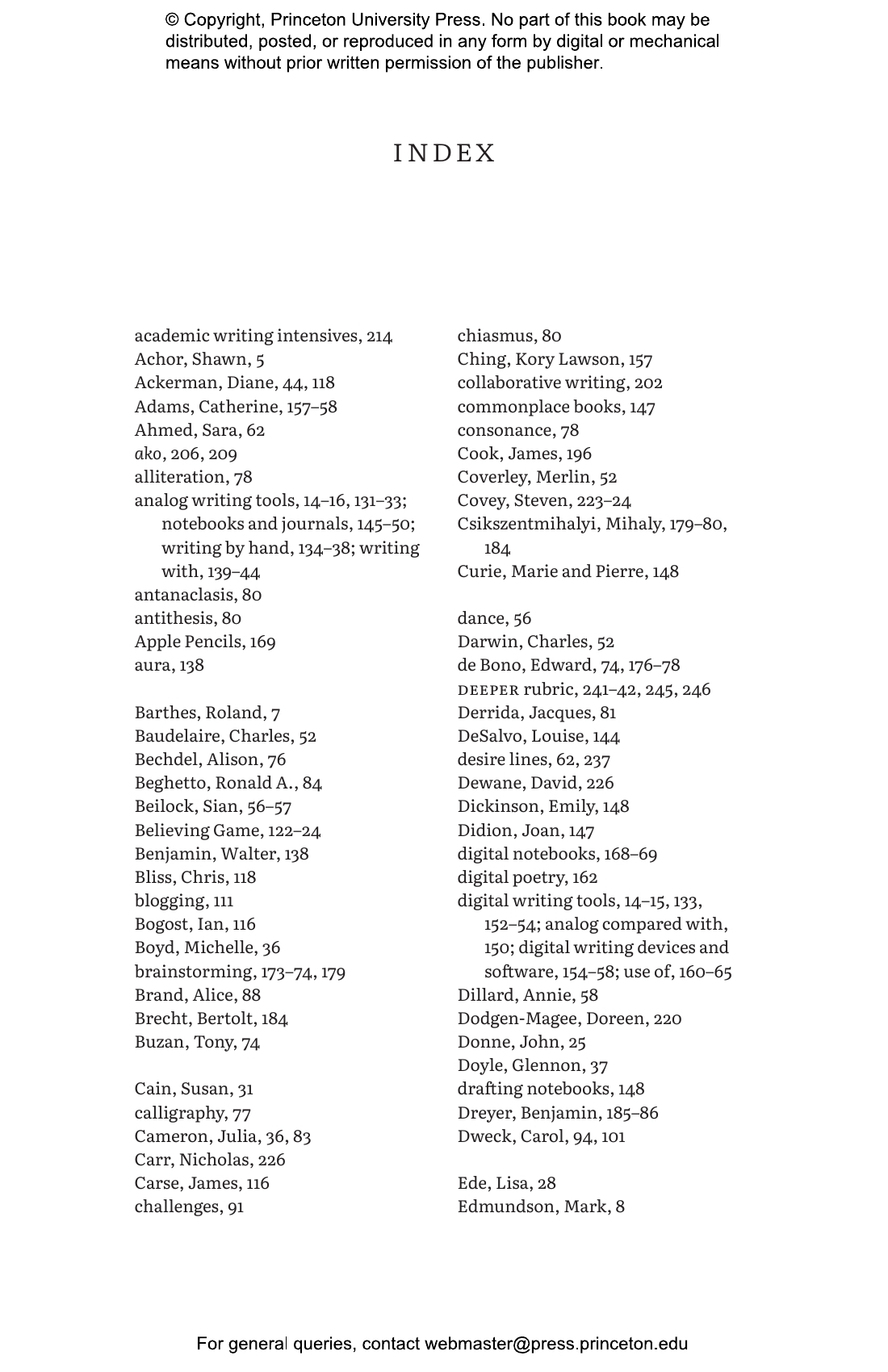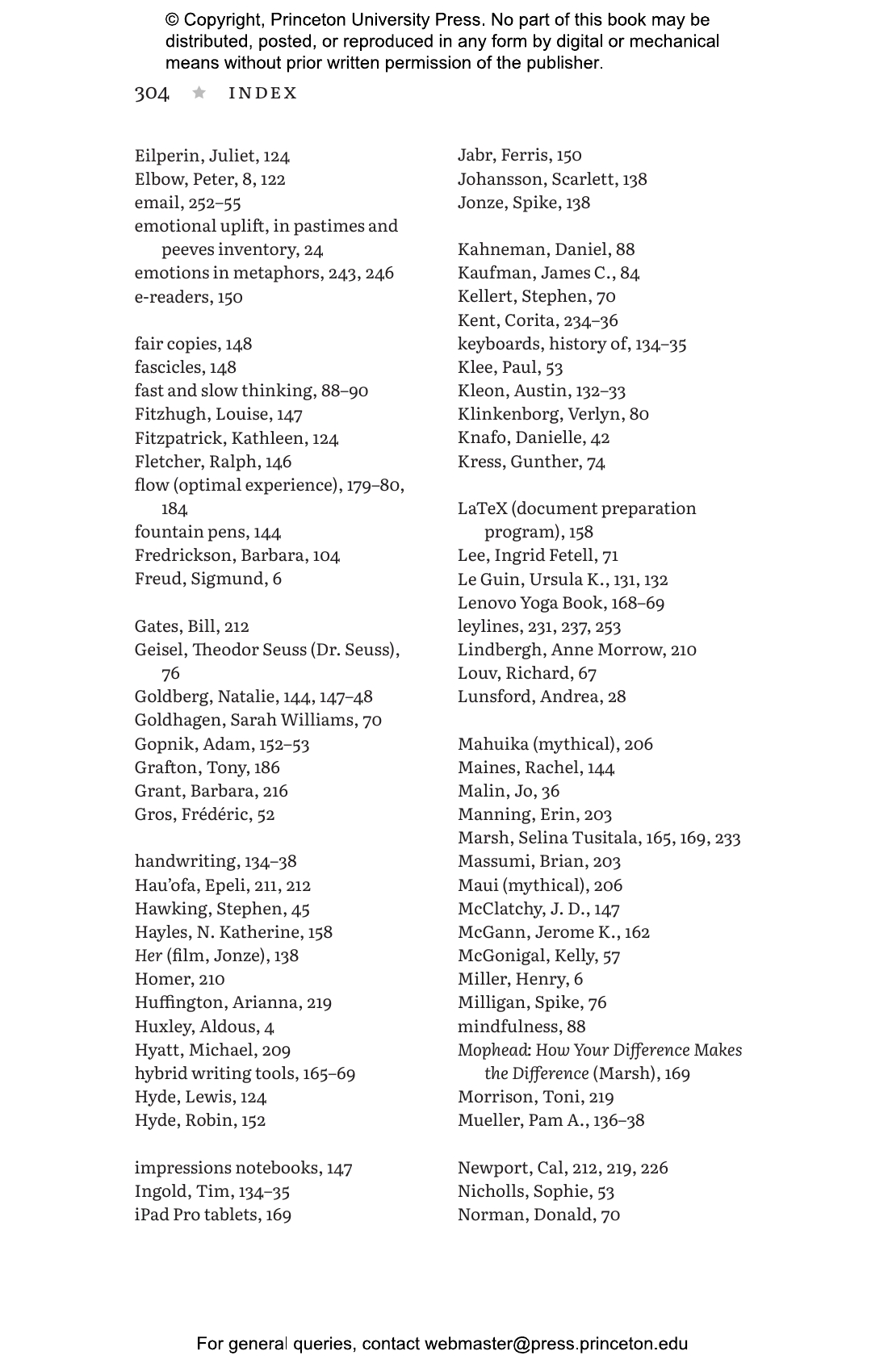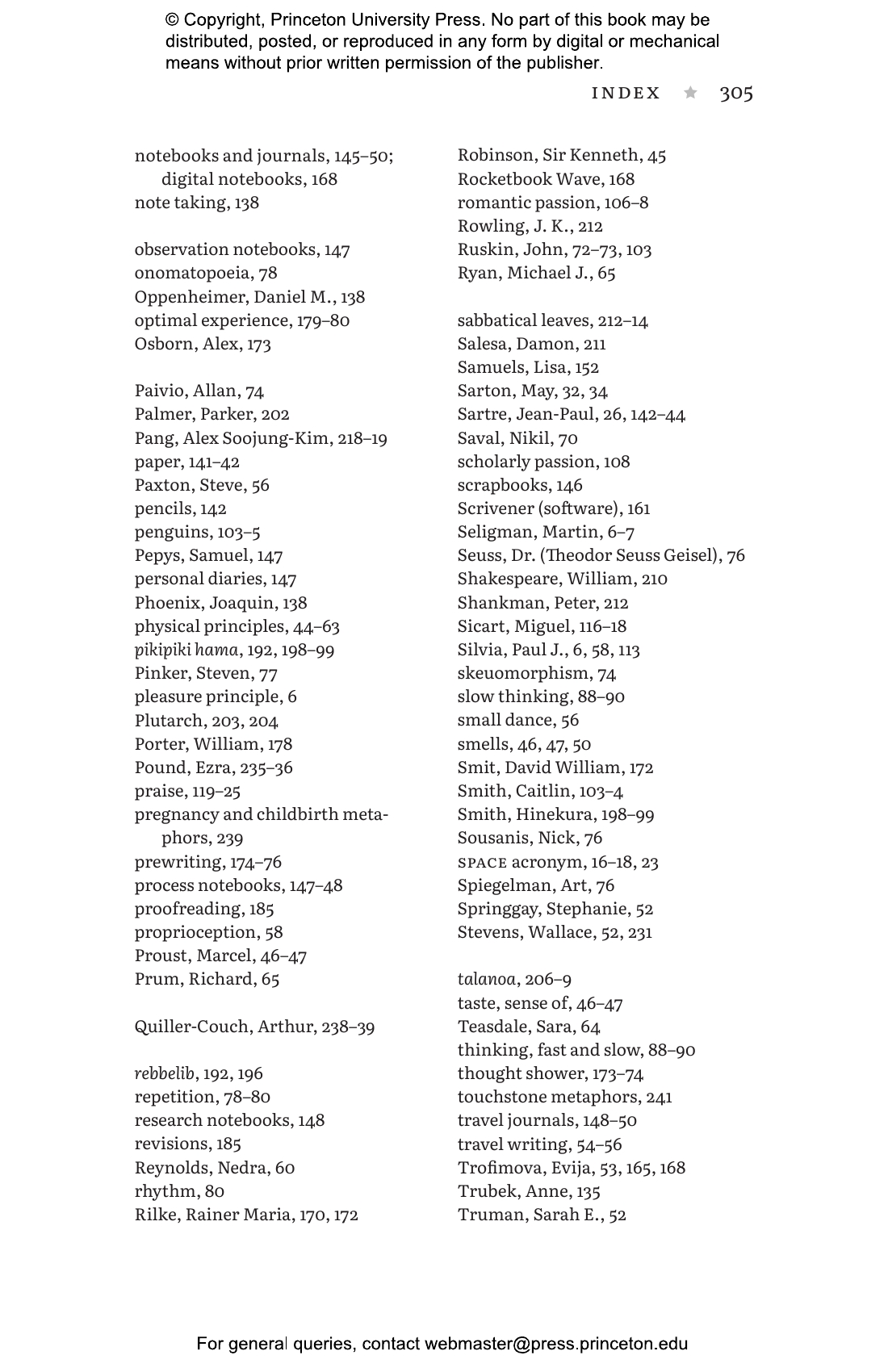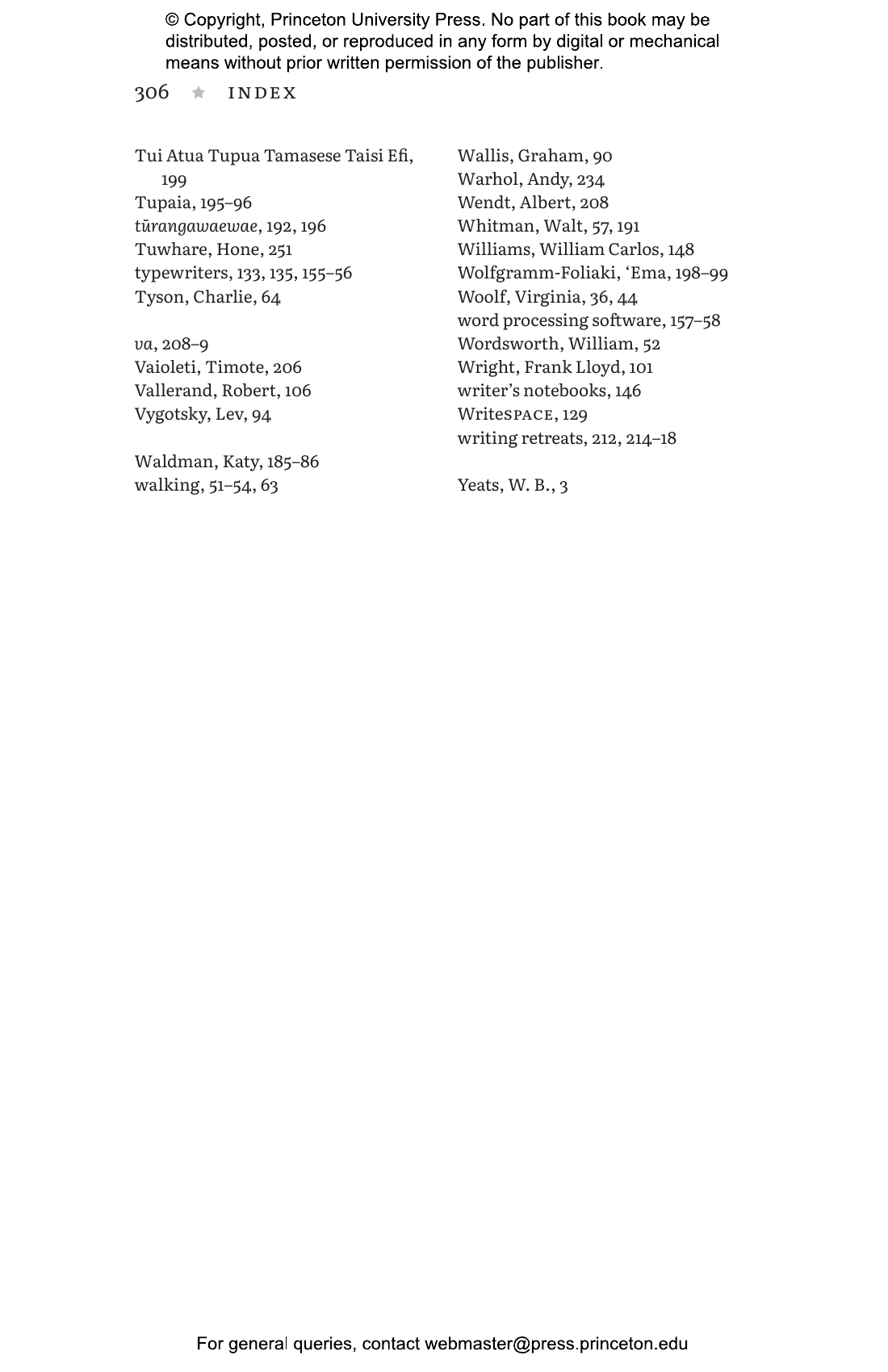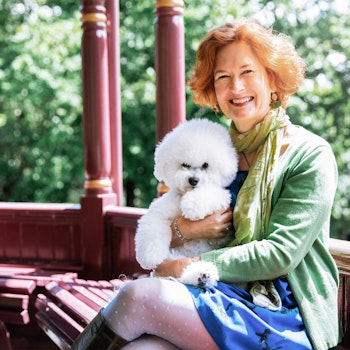Writing should be a pleasurable challenge, not a painful chore. Writing with Pleasure empowers academic, professional, and creative writers to reframe their negative emotions about writing and reclaim their positive ones. By learning how to cast light on the shadows, you will soon find yourself bringing passion and pleasure to everything you write.
Acclaimed international writing expert Helen Sword invites you to step into your “WriteSPACE”—a space of pleasurable writing that is socially balanced, physically engaged, aesthetically nourishing, creatively challenging, and emotionally uplifting. Sword weaves together cutting-edge findings in the sciences and social sciences with compelling narratives gathered from nearly six hundred faculty members and graduate students from across the disciplines and around the world. She provides research-based principles, hands-on strategies, and creative “pleasure prompts” designed to help you ramp up your productivity and enhance the personal rewards of your writing practice. Whether you’re writing a scholarly article, an administrative email, or a love letter, this book will inspire you to find delight in even the most mundane writing tasks and a richer, deeper pleasure in those you already enjoy.
Exuberantly illustrated by prizewinning graphic memoirist Selina Tusitala Marsh, Writing with Pleasure is an indispensable resource for academics, students, professionals, and anyone for whom writing has come to feel like a burden rather than a joy.
Awards and Recognition
- A Choice Outstanding Academic Title of the Year
Helen Sword is professor emerita in the School of Humanities and the Centre for Arts and Social Transformation at the University of Auckland and founder of WriteSPACE, an international virtual writing community. Her books include Air & Light & Time & Space: How Successful Academics Write; The Writer’s Diet; and Stylish Academic Writing. Website helensword.com Selina Tusitala Marsh is a poet, academic, and illustrator whose books include three volumes of poetry and the Mophead series of graphic memoirs.
"This book will be valuable for any writers—not only academics—who wish to experience more pleasure in their writing. Sword's engaging and personable writing style makes the book a pleasure to read."—Choice Reviews
“Intrinsic motivations like joy and fascination can and should propel our writing—all the more so when extrinsic rewards seem few. In this generous, generative book, Helen Sword offers us ample encouragement and insight on how, even in difficult times, we can dare to seek delight.”—Margy Thomas, founder of ScholarShape
“At last, a writing guide that doesn’t scold or ridicule, but treats the challenge of writing well as a form of pleasurable mastery.”—Steven Pinker, Johnstone Professor of Psychology, Harvard University, author of The Sense of Style: The Thinking Person’s Guide to Writing in the 21st Century
“Sword is the prophetic voice crying out in academia’s wilderness: ‘Write with pleasure! It can be done! Come and see!’ Through enviable prose, enticing poems, and elegant illustrations, readers see the pleasure, feel it, apply it to their own writing and, when all is read and done, cannot resist repenting.”—Patricia Goodson, Texas A&M University
“Helen Sword has been helping me improve my writing for more than a decade. In Writing with Pleasure, she finally taught me how to love it—and keep loving it. If you want to make writing a painless habit, this book is for you.”—Inger Mewburn, Australian National University
“Writing with Pleasure—itself a pleasure in the reading—opens exciting vistas onto the great expanse of writing: the aesthetics in the written, the corporeality of the writer, the emotions felt for and from writing. This original and inventive book charts new territory for anyone who writes and for everyone who researches writing.”—Daniel Shea, Karlsruhe Institute of Technology, Germany
Helen Sword’s Website
https://www.helensword.com/
Workshop Suggestions for Writing with Pleasure
Writing with Pleasure provides faculty and student writers with a refreshing antidote to the “shut up and write” school of academic productivity, which squashes out creativity, color, and joy in the name of scholarly seriousness. Through cutting-edge research, inspiring examples, and playful prose, international writing expert Helen Sword shows academic writers from across the disciplines that productivity and pleasure are bedfellows, not enemies.
Dr. Sword offers an array of online workshops, courses, retreats, and community events via her website at www.helensword.com. Below are some suggestions for using Writing with Pleasure in a campus-based academic writing program, course, or workshop.
1. Pleasure Prompts
Writing with Pleasure contains a sequence of 18 short reflective writing exercises called “Pleasure Prompts,” each of which precedes or follows a key section or chapter of the book.
The entire sequence is well suited for a semester-long faculty writing group, graduate research seminar, or undergraduate writing course.
Individual or paired Pleasure Prompts can also be used to anchor individual writing workshops or discussions. Popular pairings include:
- Butterflies and Cocoons and Sea of Islands (Pleasure Prompts #4 and #14): On society, solitude, and work-life balance. (Chapters 1 and 10)
- Bodies of Writing and Analog Anchors (Pleasure Prompts #5 and #10): On the physical and material pleasures of writing. (Chapters 2 and 6)
- Climbing the C-Curve and Tradewinds and Doldrums (Pleasure Prompts #7 and #12): On the challenges and joys of the creative process. (Chapters 4 and 8)
- Penguin Time and Compass Points (Pleasure Prompts #8 and #13): On passion, play, praise, and personal identity. (Chapters 5 and 9)
2. The SPACE of Writing
Writing with Pleasure is structured around the acronym SPACE, which encourages writers to develop a writing practice that is socially balanced, physically engaging, aesthetically nourishing, creatively challenging, and emotionally fulfilling.
The following Pleasure Prompts have been designed to work together as a sequence, prompting writers first to excavate their own past pleasure in writing, then to evaluate the emotions that they currently associate with academic writing, and finally to develop a “SPACE map” and action plan for bringing more pleasure into their writing life.
- A Time in Your Life (Pleasure Prompt #2): Write about a time in your life when writing gave you pleasure. (10 minutes; pp 18-19)
- Pleasure Prompt #3 (“Pastimes and Peeves”): Using the SPACE rubric, compare a favorite pastime or hobby with an aspect of your academic writing that does not give you pleasure. (10 minutes; pp 23-24).
- Pleasure Prompt #9 (“Mapping the WriteSPACE”): Use the SPACE rubric and five differently colored pencils or markers to draw and label the social, physical, aesthetic, creative, and emotional components of your ideal WriteSPACE (10 minutes; pp 128-29)
You can find a 20-minute online video tutorial called “Mapping the WriteSPACE” in the online SPACE Gallery (https://www.helensword.com/spacegallery), along with a curated collection of SPACE maps produced by academic writers from around the world. (Click on “Your Gallery” for the tutorial).
3. Metaphors for Writing
The concluding chapter of Writing with Pleasure, “Making SPACE,” prompts readers to develop a personal metaphor for writing that they can use to guide and empower them through times of frustration and challenge. Each of the following Pleasure Prompts works well on its own, or they can be undertaken as a three-part sequence:
- Pleasure Prompt #15 (“Lifelines, Leylines, Desire Lines”)
- Pleasure Prompt #16 (“Touchstones”)
- Pleasure Prompt #17 (“Chiaroscuro”)
See “Making SPACE,” pp. 229-47.
4. Diving for Treasure
Writing with Pleasure contains forty illustrations produced by prize-winning graphic memoirist Selina Tusitala Marsh in collaboration with Helen Sword. Many of these drawings include some text: a poem, an anecdote, a conversation. All are intended to be evocative, not prescriptive.
The following exercise can be used as a playful icebreaker for any writing workshop:
- Photocopy each of the thirty illustrations titled “The Pleasures of …” (listed on pp ix-x).
- Fold up the pages and invite each workshop participant to draw one from a hat.
- Working in pairs or groups, ask the participants to compare their illustrations, then to report back to the larger group. What writing-related pleasures does each drawing address? What stories are told or emotions evoked that could not have been communicated in the same way via standard academic prose?
Download Word Document
